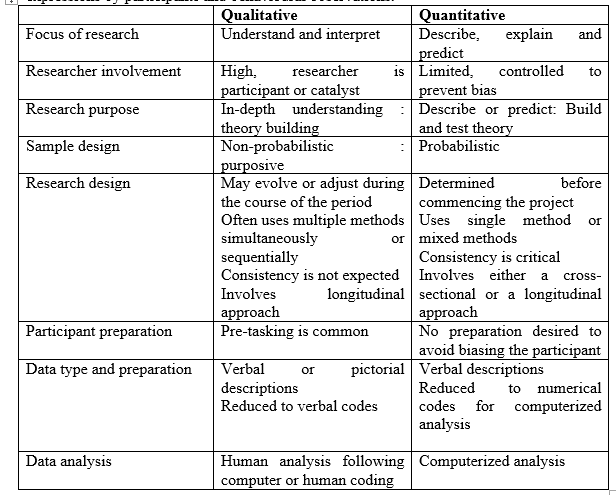Qualitative research
It includes designs, techniques and measures that do not produce discrete numerical data. Qualitative data can be collected through direct observation, participant observation or interview method. Qualitative research includes an “array of interpretive techniques which seek to describe, decode, translate and otherwise come to terms with the meaning, not the frequency, of certain more or less naturally occurring phenomena in the social world. Qualitative research aims to achieve an in-depth understanding of a situation. Qualitative research is designed to tell the researcher how (process) and why (meaning) things happen as they do. Qualitative techniques are used at both the data collection and data analysis stages of a research project. At the data collection stage, the array of techniques includes focus groups, individual depth interviews, case studies, ethnography, grounded theory, action research and observation. During analysis, the qualitative researcher uses content analysis of written or recorded materials drawn from personal expressions by participants and behavioural observations.

Quantitative research
It includes designs, techniques and measures that produce discreet numerical or quantifiable data.
Advantages of using both qualitative and quantitative methods
1.Since in many cases a researcher has several objectives, some of these objectives are better assessed using quantitative methods.
2.Both methods supplement each other i.e. qualitative methods provide the in-depth explanations while quantitative methods provide the data needed to test hypotheses.
3.Since both methods have a bias, using both types of research helps to avoid such bias in that each method can be used to check the other.
Disadvantages of using both qualitative and quantitative methods
1.It is expensive
2.Researchers may not have sufficient training in both methods to be able to use them effectively.
Titany answered the question on
October 21, 2021 at 07:55